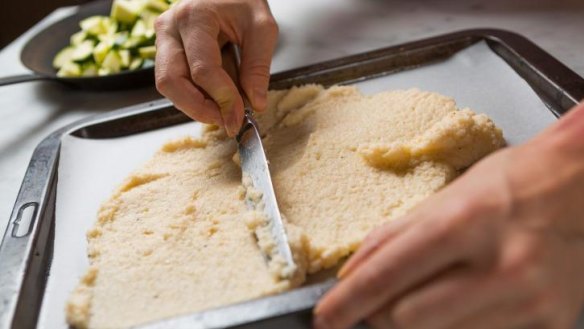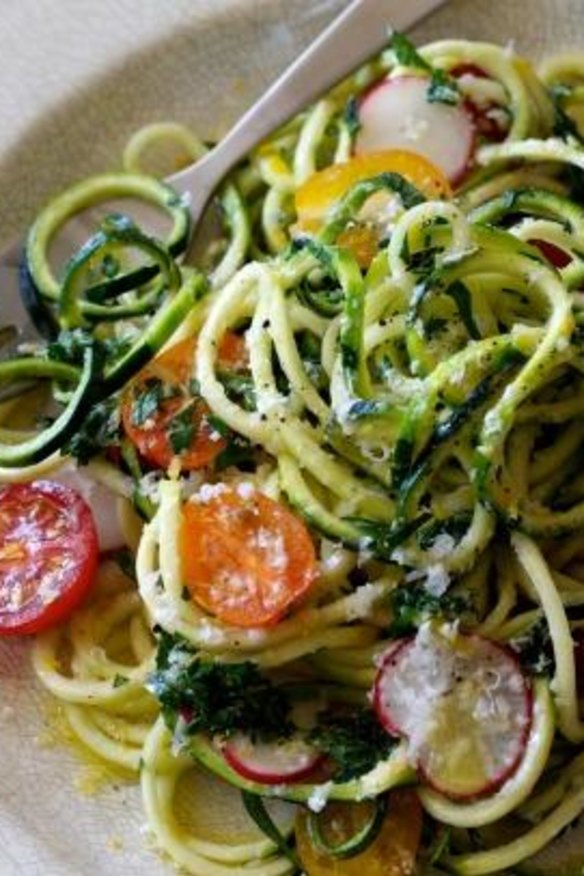Swap it for good health in winter

When the temperature drops, salads take a back seat to comfort food classics like stews, pastas and hearty winter roasts.
Here are 10 ways to indulge in winter favourites, without overdoing the kilojoules.
1. Swap it: White potato for sweet potato

Sweet potatoes have a lower glycaemic index, so you'll feel fuller for longer. They are also a good source of fibre and vitamin A and are delicious mashed, baked and steamed.
Recipe suggestion:
2. Swap it: Hot chips for winter salads
Hot chips made with white potatoes are high in starchy carbohydrates and fat. Try swapping them for a seasonal winter salad containing brussels sprouts, beetroots and cruciferous winter vegetables. Compared to chips, these vegetables contain a greater source of fibre, antioxidants and vitamins such as vitamin C and A and B group vitamins.
Recipe suggestions:
3.Swap it: Hot chocolate for a "golden latte"
Golden lattes are made with warming ayurvedic spices such as turmeric, cardamom and ginger, then prepared with almond milk. They contain less sugar and kilojoules compared to traditional hot chocolate.
Recipe suggestion:
4. Swap it: Apple pie for stewed winter fruits
Apple pie might be the ultimate winter dessert, but it's also high in kilojoules, especially once you add that scoop of cream or ice-cream. A healthier alternative is any combination of winter fruits – such as apples or pears– cooked with some warming-winter spices such as cinnamon, ginger, allspice or cardamom.
5. Swap it: Starchy sides for cultured vegetables
Starchy sides made with potatoes and grains are popular accompaniments to rich-tasting stews and casseroles during the winter months. A healthier alternative is to swap these sides for some cultured vegetables (sauerkraut, kim chi or any cultured vegetable medley). Cultured vegetables contain greater quantities of fibre, C and B vitamins and health-promoting bacteria that can benefit digestive health.
Recipe suggestion:
6. Swap it: Traditional oat porridge for a high protein porridge alternative
Rolled oat porridge served with honey, cream or maple syrup is a popular winter breakfast. Try a healthy swap of a high-protein porridge mix made with buckwheat, millet or spelt grains. You can also add protein, and nutrient-rich toppings such as fresh seeds (sunflower, pumpkin or chia), fresh fruits or nuts.
Recipe suggestion:
7. Swap it: Pasta for zucchini "zoodles"
Zucchini has a lower glycaemic index, which can increase feelings of satiety, allowing you to feel fuller for longer. It's also an excellent source of fibre, antioxidants and folate.
Recipe suggestion:
8. Swap it: Sweet biscuits for fresh vegies and bean dips
Try swapping sweet biscuits (which are high in sugar, salt and trans fats) with a healthier mix of fresh winter vegetables (carrots, celery and winter lettuces) plus some low GI bean dips such as hummus or cannellini bean.
Recipe suggestions:
9. Swap it: Cream for yoghurt
Traditionally fermented sour-tasting yoghurt contains greater amounts of calcium than most dairy products. It's also rich in health-promoting bacteria such as lactobacillus and bifidobacterium, which develop during the fermentation process. These bacteria ferment milk sugars, such as lactose, which makes them easier to digest. They also provide a good source of probiotics.
10. Swap it: A pizza base for cauliflower
Ground cauliflower is an excellent alternative to refined white grain flour. It has a lower glycaemic index and a higher fibre content which will help you to feel fuller for longer. Here's how to turn it into a pizza base.
Recipe: Cauliflower pizza base
Ingredients
400g cauliflower florets
2 eggs
1¼ tbsp psyllium husk
½ tsp dried oregano
2 tsp finely grated parmesan
pinch sea salt
Topping:
1-2 tbsp tomato paste
2 small zucchini, finely chopped
1 medium onion, finely sliced
½ cup finely chopped ham
¼ cup grated parmesan cheese
1½ cups finely chopped mushrooms
Fresh rocket and basil leaves (if available)
Method
In a high-speed food processor with a sharp blade, mix the cauliflower florets to a fine-textured flour or crumb. Add the remaining ingredients and mix to a smooth paste.
Use a knife or spatula to spread the mixture flat on a sheet of greaseproof paper on a baking tray. The mixture should be half a centimetre-thick with no lumps or bumps.
Place the baking tray in a pre-heated oven at 180C. Cook for 15 minutes until the mixture is lightly brown and crisp. It's important that the base is crisp and not soft – as it can turn soggy when you prepare the pizza.
To make the pizza:
Spread a thin layer of tomato paste across the base of the pizza.
Saute the vegetables in olive oil until soft. Drain off any excess oil or liquid then spread them across the pizza. Top with ham and cheese.
Return the pizza base to the oven and cook for a further 10 minutes or until the cheese is melted. Allow to cool to room temperature, then slice and serve immediately.
Arabella Forge is an accredited practising dietitian, author and television presenter.
The best recipes from Australia's leading chefs straight to your inbox.
Sign up